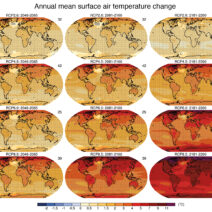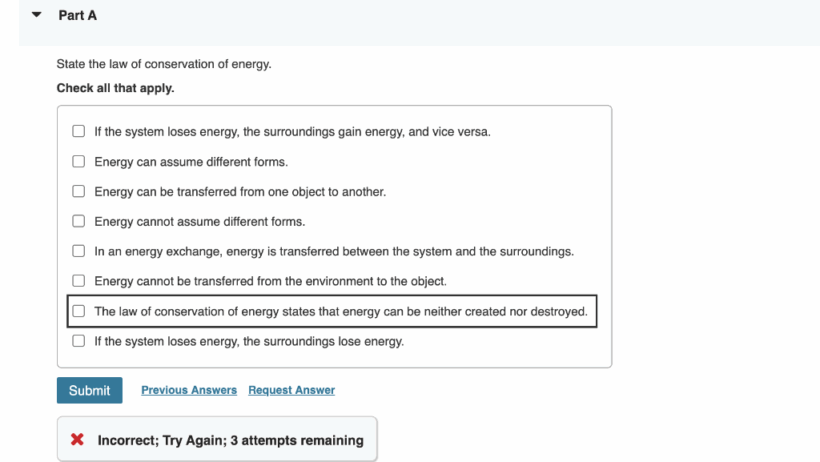The law of conservation of energy is a fundamental principle in physics that asserts energy cannot be created or destroyed; it can only be transformed from one form to another. This principle invites us into the profound intricacies of our universe, much like a grand tapestry woven from countless threads, where every action and reaction contributes to the whole. The energy within this tapestry might change forms—thermal, kinetic, potential, or mechanical—but its total remains impeccably constant. Let’s embark on a journey through this concept, illuminating its significance and implications for our understanding of nature.
At its core, the law of conservation of energy suggests that energy exists in various forms, each capable of being converted into others. Picture a mighty river, flowing relentlessly through varied terrain. The water’s energy burgeons as it cascades downhill, transforming from potential energy at the top of a waterfall into kinetic energy as it plummets into the serene pool below. This interplay of energy forms not only captivates the imagination but also showcases the immutable law that governs energy transitions.
To further simplify this concept, consider the humble act of striking a match. The potential energy stored in the matchstick’s wood is released when friction ignites it, converting it into chemical energy manifested as heat and light. Here, we observe energy’s metamorphosis, rather than its disappearance. The warmth you feel and the flickering flame you see do not stem from new energy being created, but rather from the transformation of energy existing in the match itself. This metamorphic journey underscores the essence of conservation—each stage of transformation enriches the cycle without any energy loss.
Deepening our understanding, it’s essential to explore the different forms of energy that pivot around us. Potential energy lies in stored energy, often seen in objects at rest. For example, a rock perched precariously on a cliff possesses potential energy due purely to its elevation. The moment gravity nudges it off the edge, its stored energy morphs into kinetic energy, catapulting the rock downward with an exhilarating burst. This energy dance elegantly illustrates conservation at work, where the sum remains unchanged.
In juxtaposition, consider kinetic energy—the energy of motion. A vehicle barreling down a highway epitomizes kinetic energy in action. The energy generated by the fuel ignites an intricate process within the engine, transforming chemical energy into motion. Interestingly, as the car decelerates, the kinetic energy dissipates, transferring into heat for the brakes or even sound as it impacts the surrounding environment. Yet, despite these transformations, the total energy in the system remains constant, reinforcing the inviolable law at play.
Thermal energy, often perceived as mere heat, is another critical form. Imagine gathering around a cozy fire on a chilly evening, feeling the warmth envelop you. The fire’s energy transmutes from chemical energy of the wood through combustion, releasing thermal energy that radiates warmth throughout the space. It’s a theater of energy transformation, constantly recycling while manifesting in numerous ways. However, the energy never vanishes; it merely evolves. Understanding this exchange is paramount as we seek to maintain balance within our ecosystems.
The implications of the law of conservation of energy extend far beyond theoretical musings. Consider energy conservation in everyday life, especially in the context of environmental stewardship. Our energy consumption directly influences ecological dynamics. When we harness energy efficiently, we not only reduce waste but also contribute to a sustainable future. Every light bulb switched off when not in use, every ounce of water conserved, bends the energy flow towards a greener tomorrow.
The transition to sustainable energy solutions further accentuates the law’s relevance. Renewable energy sources—solar, wind, and hydro—exemplify how we can capture and convert natural energy forms while adhering to conservation principles. Solar panels transform sunlight into electricity, echoing the age-old narrative of energy transformation. The wind’s kinetic energy is reaped by turbines converted into electrical energy—a dance of nature flourishing under human ingenuity. As we pivot towards cleaner energy, the law of conservation of energy stands as a beacon, guiding us through our quest for sustainability.
Additionally, economics embraces this principle. It reflects the correspondence between energy expenditure and economic growth; societies thrive when energy is wisely managed. The energy we invest translates into productivity, yet waste engenders economic losses. Just as the energy in a closed system remains constant, so does the connection between efficient energy use and a balanced economy. The delicate espousal of ecological and economical principles reveals a seamless unity with conservation.
In a poignant metaphor, one could liken the law of conservation of energy to a grand symphony. Each instrument—energy form—plays its part, contributing to an overarching harmony. When one instrument crescendos, another may softly recede, yet the overall essence of the piece remains intact. This interplay exemplifies the law’s permanence across both natural and human domains. Recognizing this cyclical nature of energy can enhance our appreciation for the intricate balances present in our world.
Ultimately, the law of conservation of energy remains a cornerstone of physics, possessing both profound simplicity and intricate complexities. Its reach expands far beyond mere equations and definitions; it touches upon our everyday lives, our environment, and our economy. Understanding this law not only enhances our scientific literacy but also evokes a sense of responsibility towards our planet. Each act of conservation, each mindful decision we make, reverberates through this symphony of energy, sustaining the balance of life in all its forms. Embracing the law of conservation of energy is not merely an academic exercise; it is a call to action for preserving our shared environment for future generations.








